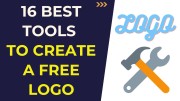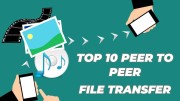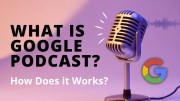How to Create Email Newsletters: Complete 2025 Guide
Now picture this, You spend hours crafting the perfect social media post, hit publish, and watch as the algorithm shows it to barely 5% of your followers. Frustrating, right? Now imagine having a direct line to your audience - no algorithms, no gatekeepers, just you and the people who genuinely want to hear from you. That's the power of email newsletters.
In 2025, while everyone's chasing the latest social media trend, smart marketers are rediscovering what's been hiding in plain sight all along. Email marketing delivers an average return of $42 for every $1 spent, crushing every other digital marketing channel. Whether you're a solopreneur, content creator, or business owner, learning how to create email newsletters isn't just helpful - it's essential for building a sustainable audience you actually own.
This guide will walk you through everything you need to know about creating newsletters that people love to open, read, and share.

How to Create Email Newsletters: Your Complete Guide for 2025
What is an Email Newsletter? (And Why You Need One)
An email newsletter is a regularly scheduled email you send to subscribers who've opted in to hear from you. Unlike promotional emails that push sales or transactional emails that confirm purchases, newsletters deliver consistent value - whether that's education, entertainment, inspiration, or curated insights.
Here's why newsletters matter more than ever:
You own your audience - Social platforms can change their rules overnight. Your email list? That's yours forever. When you have 10,000 email subscribers, you can reach 10,000 people. When you have 10,000 social followers, you might reach 500 on a good day.
Engagement rates tell the story - While social media engagement hovers around 1-3%, email newsletters regularly see open rates of 20-30% and click-through rates of 2-5%. People check their inbox intentionally - they're already in the right mindset to engage.
Direct revenue impact - Whether you're selling products, services, or simply building brand awareness, newsletters create a reliable channel for consistent revenue generation. In 2025, the creator economy is increasingly built on newsletter monetization, with platforms like Substack enabling thousands of writers to earn full-time incomes.
The difference between a newsletter and a promotional email is simple: newsletters build relationships; promotional emails make asks. The best newsletters do both, but always lead with value.
Step 1: Define Your Newsletter Strategy
Before you write a single word, you need crystal clarity on who you're talking to and why.
Identify Your Target Audience
Start by creating a detailed audience persona. Who exactly are you writing for? Don't say "everyone" - that's a recipe for bland, unfocused content. Get specific: Are they startup founders in their 30s struggling with work-life balance? Marketing managers looking for actionable social media tips? Parents seeking quick, healthy meal ideas?
Research what your audience actually wants to read. Browse Reddit threads, read comments on competitor newsletters, and run a simple survey asking your existing followers what challenges keep them up at night. The tighter your focus, the stronger your connection.
Set Clear Goals and KPIs
What does success look like for your newsletter? Common goals include:
-
Brand awareness: Establish thought leadership in your industry
-
Lead nurturing: Move prospects closer to purchase decisions
-
Community building: Create a loyal tribe around your mission
-
Revenue generation: Direct sales or affiliate commissions
Match each goal with measurable KPIs. Track your open rate (industry average: 20-25%), click-through rate (2-5%), conversion rate, and list growth rate. These numbers tell you what's working and what needs adjustment.
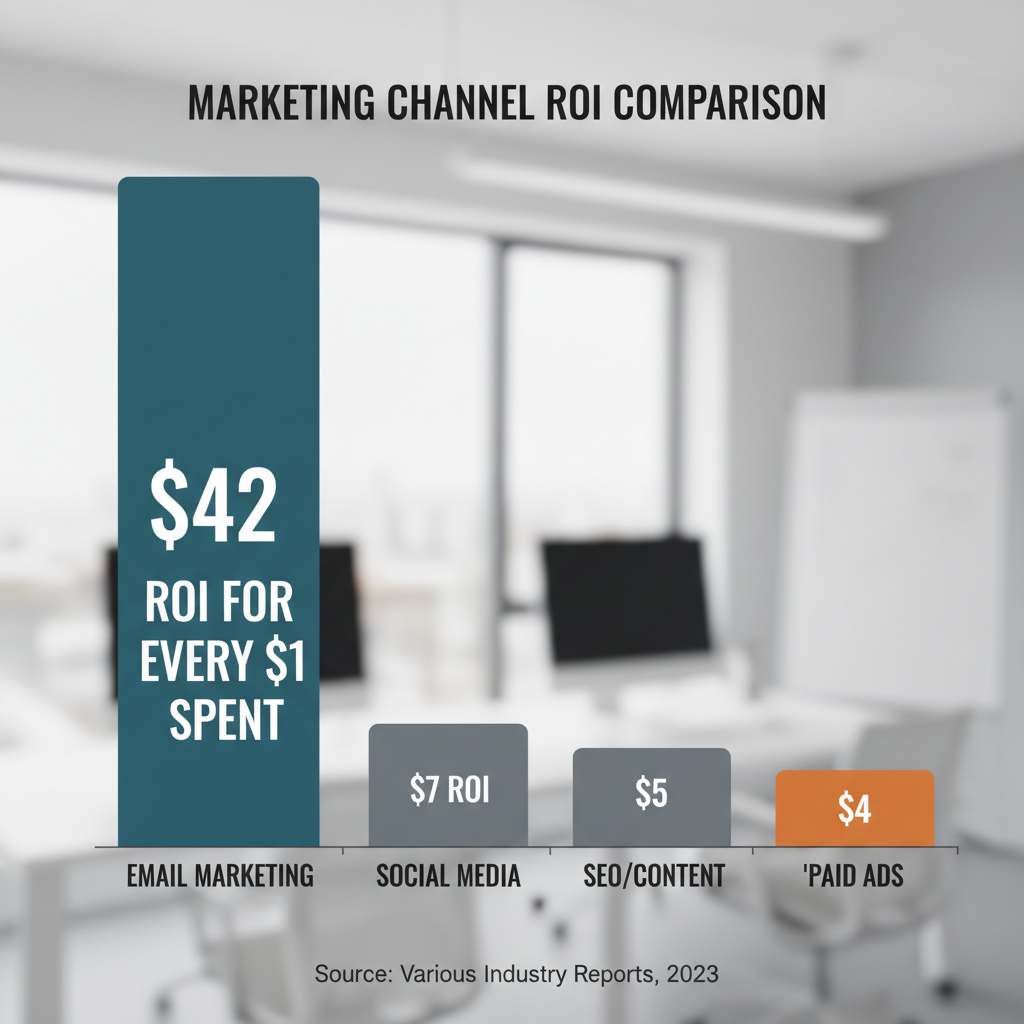
Choose Your Newsletter Type
Your newsletter type should align with your goals and audience needs:
-
Educational newsletters teach skills or share how-to content
-
Curated roundups save readers time by filtering the noise
-
Thought leadership newsletters share unique perspectives and opinions
-
Company updates keep customers informed about products and news
-
Hybrid approaches mix multiple content types
James Clear's newsletter delivers one idea about habits each week - simple, focused, valuable. Morning Brew curates business news with personality. Find your angle and own it.
Step 2: Choose the Right Email Marketing Platform
Your email marketing platform is your newsletter's foundation. In 2025, you have excellent options across all price points.
For beginners: Mailchimp offers an intuitive interface and generous free plan (up to 500 subscribers). ConvertKit is creator-focused with powerful automation features. Beehiiv is the newcomer beloved by newsletter-first publishers.
For growing businesses: HubSpot integrates email with full CRM capabilities. ActiveCampaign excels at advanced automation and segmentation. Klaviyo dominates e-commerce email marketing.
For creators monetizing directly: Substack makes paid newsletters dead simple with built-in payment processing. Ghost offers more customization for tech-savvy writers.
When evaluating platforms, prioritize these features:
-
Drag-and-drop email editor for easy design
-
Robust automation for welcome series and workflows
-
List segmentation to target specific subscriber groups
-
Detailed analytics showing opens, clicks, and conversions
-
High deliverability rates (your emails actually reach inboxes)
-
Integrations with your website, CRM, and other tools
Most platforms offer free trials. Test two or three before committing. Pay attention to the user experience - if you find the interface confusing during the trial, you'll grow to hate it over time.

Step 3: Build and Grow Your Email List
An email list doesn't build itself. You need to give people compelling reasons to subscribe and make it ridiculously easy for them to do so.
Create Compelling Lead Magnets
Nobody hands over their email address for nothing. Offer a lead magnet - something valuable enough that people will trade their contact info for it. Effective lead magnets include:
-
Checklists and templates that solve immediate problems
-
Ebooks or guides diving deep into specific topics
-
Exclusive content not available anywhere else
-
Discount codes for e-commerce businesses
-
Free tools or calculators providing instant value
The key is specificity. "Free Marketing Guide" is vague and forgettable. "7-Day Instagram Growth Checklist (That Got Me 10K Followers)" is specific and promises a concrete outcome.
Optimize Signup Forms
Place signup forms strategically across your digital presence:
-
Website header or navigation bar
-
Blog post sidebars
-
End of high-performing blog posts
-
Exit-intent popups (use sparingly)
-
Footer on every page
Keep form fields minimal. Name and email address is usually sufficient - every additional field decreases conversion rates by about 10%. Write persuasive copy that emphasizes the benefit: "Get weekly productivity tips that actually work" beats "Subscribe to our newsletter."
Compliance matters. Include a clear privacy policy link and ensure your forms comply with GDPR (for EU subscribers) and CAN-SPAM regulations (for US). These aren't optional - they're legal requirements.
List Growth Strategies
Growing from zero to your first 100 subscribers is the hardest part. Try these tactics:
Leverage your existing network. Tell your social media followers about your newsletter. Add it to your email signature. Mention it in podcast appearances or guest posts.
Create content upgrades. Add specific lead magnets to high-traffic blog posts. If someone's reading your article about productivity apps, offer them a downloadable comparison chart.
Collaborate with others. Guest post on complementary newsletters. Run joint webinars. Create co-branded content that introduces you to new audiences.
Run referral programs. Morning Brew famously grew using referral incentives - subscribers who referred friends got exclusive perks. Tools like SparkLoop make this easy to implement.
Consider paid promotion. Facebook and LinkedIn ads can jumpstart list growth if you have the budget. Start small, test different audiences, and scale what works.
Step 4: Design Your Newsletter Template
First impressions matter. Your newsletter design should be clean, on-brand, and scannable - especially on mobile devices where 60% of emails are opened.
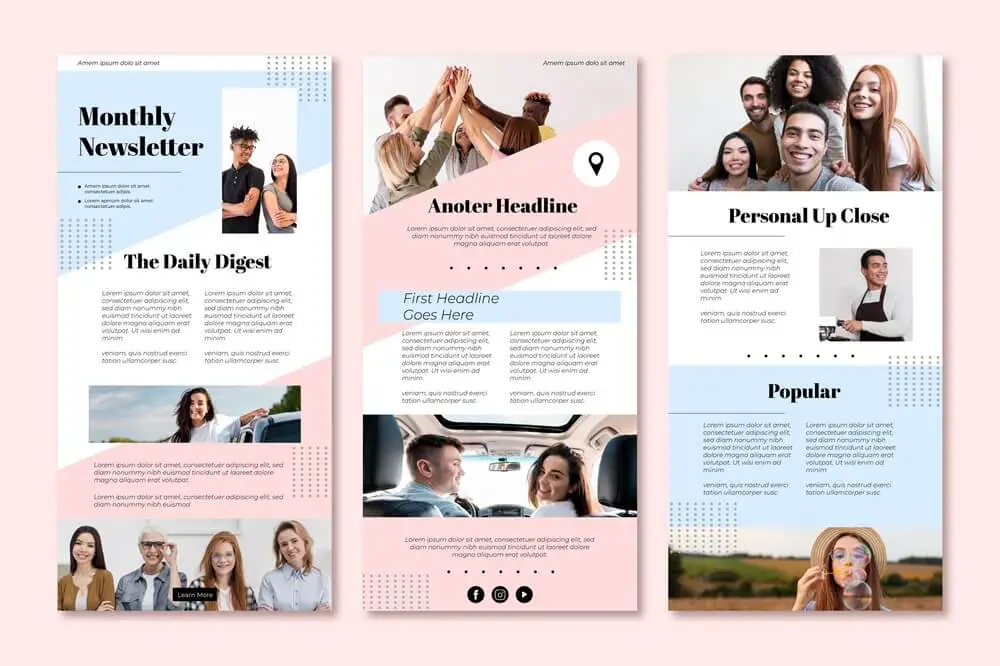
Email Design Best Practices
Embrace single-column layouts. They're mobile-friendly and guide readers naturally through your content. Use plenty of whitespace to prevent overwhelming readers. Choose 2-3 brand colors maximum and stick with readable fonts (16px minimum for body text).
Images enhance your newsletter, but don't go overboard. Heavy image-based emails trigger spam filters and frustrate readers with slow internet. Optimize every image for fast loading and always include descriptive alt text for accessibility.
Essential Newsletter Elements
Every newsletter should include:
-
A recognizable header with your logo or name
-
Pre-header text (that preview text visible in inbox) - use it wisely
-
Clear content hierarchy with scannable headlines
-
Compelling visuals that support your message
-
Strong calls-to-action that stand out (buttons typically outperform text links)
-
Footer with legal requirements (unsubscribe link, physical address, social links)
Think of your newsletter design like a storefront window. It should be inviting enough to draw people in while making your best content immediately visible.
Accessibility Matters
Design for everyone. Use sufficient color contrast (4.5:1 ratio minimum for text). Structure your HTML semantically so screen readers can navigate properly. Write descriptive link text instead of "click here." These practices expand your reach while showing respect for all subscribers.
Step 5: Craft Compelling Newsletter Content
Great design attracts attention. Great content keeps it.
Write Attention-Grabbing Subject Lines
Your subject line determines whether anyone reads your carefully crafted newsletter. Keep it punchy - 30-50 characters is ideal for mobile displays. Use power words that create curiosity or urgency: "revealed," "ultimate," "proven," "don't miss."
Personalization boosts open rates by 26% on average. Most platforms let you automatically insert subscriber names: "Sarah, here's your personalized reading list" feels more engaging than "Here's your reading list."
Test everything. A/B test subject lines regularly to learn what resonates with your audience. What works for one list might flop for another.
Avoid spam triggers like excessive capitalization, multiple exclamation marks, or phrases like "FREE MONEY!!!" These land you in spam folders faster than you can say "unsubscribe."
Structure Your Newsletter Content
Start with a strong hook. Tell a quick story, share a surprising stat, or ask a thought-provoking question. The first two sentences determine whether readers keep scrolling or start deleting.
Deliver value consistently. Whether you're teaching, entertaining, or curating, make sure every newsletter gives readers something worth their time. Ann Handley's "Total Annarchy" newsletter perfectly balances writing advice with personality and humor.
Break up text with subheadings, bullet points, and short paragraphs (2-3 sentences maximum). Online readers scan before they read. Make scanning easy and they'll stick around for the details.
End with clear next steps. What do you want readers to do? Read your latest blog post? Reply with feedback? Share with a friend? Make the ask explicit and easy to complete.
Maintain Your Brand Voice
Consistency builds trust. If your first newsletter is buttoned-up and professional while your second is full of GIFs and slang, you'll confuse readers. Define your voice - conversational or formal, funny or serious - and maintain it.
Don't be afraid to show personality. People subscribe to people, not faceless brands. Share relevant personal stories. Admit when you don't know something. Have opinions. The newsletters people remember and recommend are the ones that feel human.
Step 6: Set Up Email Automation and Segmentation
Automation lets you have meaningful one-on-one conversations with thousands of subscribers simultaneously.
Welcome Email Series
First impressions set the tone for your entire relationship. Create a 3-5 email welcome sequence that:
-
Confirms subscription and sets expectations (when will they hear from you?)
-
Delivers the promised lead magnet immediately
-
Shares your best content to demonstrate value
-
Introduces yourself and your mission
-
Asks for engagement (reply, follow on social, adjust preferences)
Space these emails out over 5-7 days. Don't dump everything on day one.
List Segmentation Strategies
Not all subscribers want the same content. Segment your list based on:
-
Interests or preferences they select during signup
-
Engagement level (opens, clicks, purchases)
-
Demographics (location, job title, industry)
-
Purchase history for e-commerce businesses
Send targeted content to each segment. Your most engaged readers might love in-depth analysis, while casual subscribers prefer quick tips. Segmentation can increase revenue by 760% according to Campaign Monitor research.
Automated Workflows
Set up workflows that trigger based on subscriber behavior:
-
Re-engagement campaigns for subscribers who haven't opened in 60-90 days
-
Post-purchase sequences thanking customers and suggesting related products
-
Educational drip campaigns that teach skills over time
-
Behavioral triggers sending relevant content based on website activity
Automation doesn't mean impersonal. The best automated emails feel like they were written just for the recipient.
Step 7: Optimize Send Times and Frequency
When you send matters almost as much as what you send.
Industry research suggests Tuesday-Thursday mornings (9-11 AM local time) typically see the highest open rates. But your audience might be different. Test different days and times over several weeks to find your sweet spot.
Frequency depends on your content type and audience expectations. Daily newsletters like Axios work because they're concise and expected. Weekly newsletters are most common and generally effective. Monthly newsletters risk being forgotten between sends.
The golden rule? Consistency beats frequency. If you promise weekly newsletters, deliver weekly newsletters. Subscribers build habits around reliable senders. Break that trust and you'll see unsubscribe rates spike.
Consider time zones if you have a global audience. Many platforms offer send time optimization that automatically delivers emails when each subscriber is most likely to engage.
Step 8: Test, Analyze, and Improve Performance
Data separates guessing from knowing.
A/B Testing Strategies
Test one variable at a time:
-
Subject lines (the easiest win)
-
Sender name (personal name vs. company name)
-
Email length
-
CTA placement and wording
-
Visual elements vs. text-heavy approaches
Run tests with significant sample sizes (at least 1,000 subscribers per variation for statistical relevance). Let tests run complete sending cycles before declaring winners.
Key Metrics to Monitor

Open rate shows whether your subject lines and sender reputation are working. Below 15%? Your subject lines need work or you're hitting spam folders.
Click-through rate reveals content quality and CTA effectiveness. Low CTR means your content isn't compelling readers to take action.
Conversion rate is the ultimate metric - it measures whether your newsletter drives business results.
List growth rate should consistently exceed unsubscribe rate. If it doesn't, something's broken.
Revenue per subscriber tells you the monetary value of each person on your list.
Track trends over time rather than obsessing over single newsletters. One bad week doesn't signal disaster, but three consecutive months of declining opens demands attention.
Common Email Newsletter Mistakes to Avoid
Learn from others' mistakes instead of making them yourself.

Never buy email lists. It destroys your sender reputation, violates privacy laws, and generates zero genuine engagement. Build your list organically.
Don't neglect mobile optimization. Test every newsletter on multiple devices before sending. What looks perfect on desktop might be unreadable on phone screens.
Avoid inconsistent sending schedules. Disappearing for months then bombarding subscribers with daily emails creates frustration, not loyalty.
Don't make it all about you. Balance promotional content with valuable information. The 80/20 rule works well - 80% value, 20% promotion.
Never ignore your unsubscribe process. Make it easy and respect the decision. Fighting unsubscribes damages your reputation and it's often illegal to prevent them.
Advanced Newsletter Strategies for 2025
Stay ahead of the curve with these cutting-edge tactics.
AI-Powered Personalization
Artificial intelligence is transforming email marketing. Tools like Phrasee optimize subject lines using machine learning. Seventh Sense analyzes engagement patterns to predict optimal send times for each subscriber. ChatGPT and Claude can help draft content variations for different segments.
Use AI as a writing assistant, not a replacement. The best newsletters still require human creativity, empathy, and strategic thinking.
Interactive Email Elements
Static text emails are giving way to interactive experiences:
-
Embedded polls and surveys for real-time feedback
-
Animated GIFs and cinemagraphs that catch attention
-
Countdown timers creating urgency for limited offers
-
Accordion menus and collapsible sections for long content
These elements increase engagement but require more technical implementation. Start simple and experiment as you grow.
Monetization Strategies
Your newsletter can generate revenue through:
-
Paid subscriptions for premium content
-
Sponsorships from relevant brands
-
Affiliate marketing recommending products you genuinely use
-
Your own products or services promoted to a warm audience
The key to monetization is building trust first. Focus on delivering exceptional value for 6-12 months before introducing paid elements.
Conclusion
Creating successful email newsletters isn't rocket science, but it does require strategy, consistency, and genuine care for your readers. Start with a clear understanding of your audience and goals. Choose the right platform and build your list ethically. Design for clarity and mobile devices. Craft content that delivers real value in every send. Automate smartly, test regularly, and always optimize based on data.
The beauty of newsletters is that you don't need to be perfect from day one. Your first newsletter will probably be rough. That's fine - every expert started as a beginner. What matters is showing up consistently, listening to your audience, and improving with each send.
In 2025, while others chase algorithmic approval on social platforms, you can build something more valuable: a direct relationship with people who genuinely want to hear from you. That's the power of owning your audience.
Ready to launch your newsletter? Start with just one simple email this week. Promise one valuable thing to your readers and deliver on it. Then do it again next week. That's how every successful newsletter begins.
Frequently Asked Questions
How long should an email newsletter be?
Most effective newsletters range from 200-500 words for quick-read formats, while educational or storytelling newsletters can extend to 1,000+ words. The key is matching length to subscriber expectations and content value. Mobile readers generally prefer shorter content, while dedicated subscribers often appreciate depth. Focus on being as long as necessary and as short as possible.
What's a good open rate for newsletters?
Industry average open rates hover around 20-25%, but this varies significantly by sector. B2B newsletters typically see 20-30% open rates, while retail averages 15-20%. More important than industry benchmarks is your own trend - are your open rates improving or declining over time? Rates above 30% indicate strong subject lines and sender reputation.
How do I avoid the spam folder?
Use authenticated email (set up SPF, DKIM, and DMARC records), avoid spam trigger words in subject lines, maintain good list hygiene by removing inactive subscribers, never buy email lists, and only send to people who explicitly opted in. Engagement also matters - emails that recipients consistently open and click are less likely to be flagged as spam.
Can I create newsletters for free?
Yes. Mailchimp offers free plans up to 500 subscribers, ConvertKit provides free plans for creators with basic needs, and Substack is completely free (taking a percentage only from paid subscriptions). These free tiers include essential features like email templates, basic automation, and analytics - everything needed to start and validate your newsletter concept.
How often should I send my newsletter?
Weekly is the most common and effective frequency for most newsletters. It's frequent enough to stay top-of-mind without overwhelming subscribers. Daily works for short, curated news formats. Bi-weekly or monthly suits longer-form, in-depth content. More important than frequency is consistency - whatever schedule you choose, stick to it reliably.
